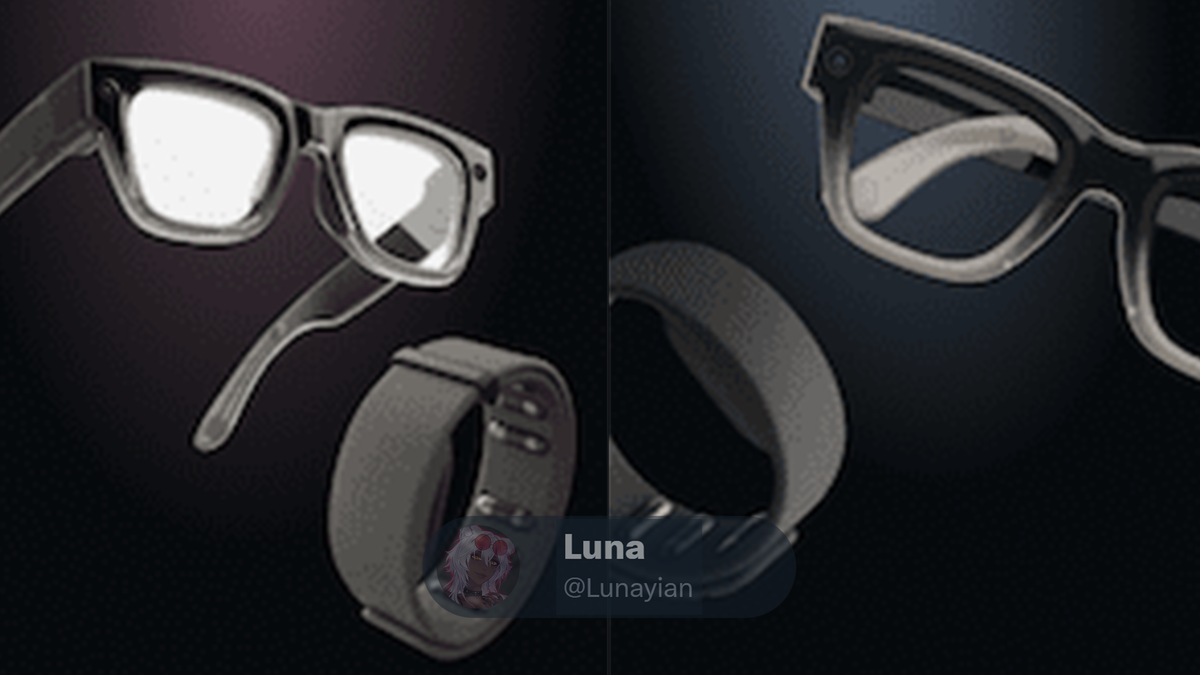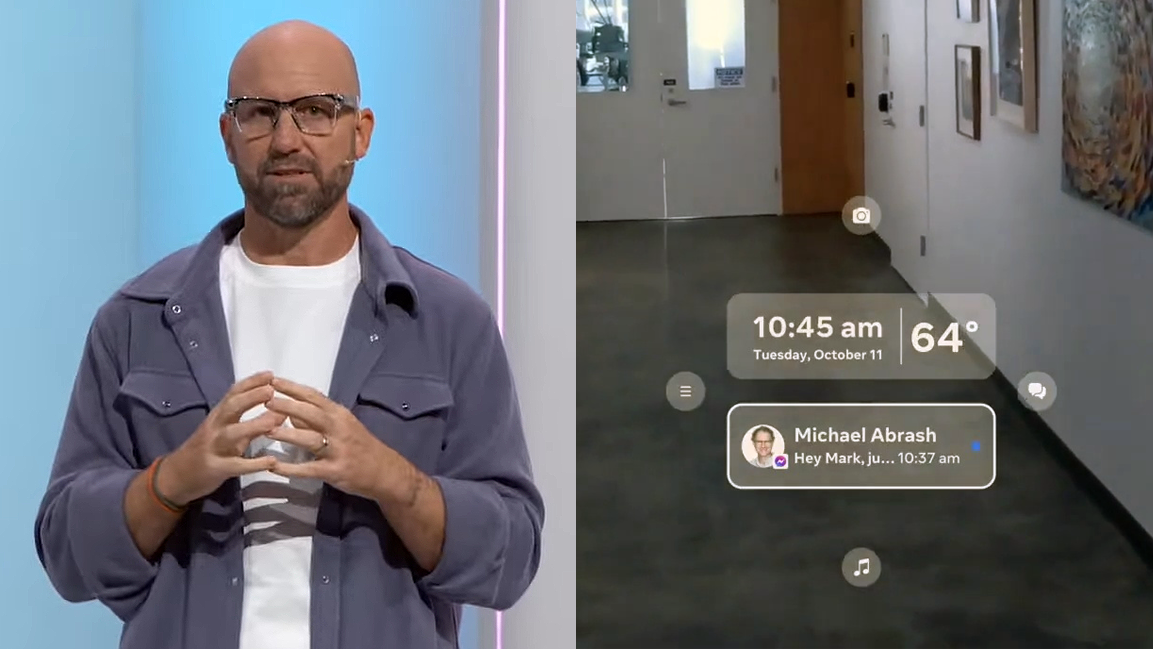Why will Meta’s first HUD glasses only have a display in one eye? An explanation from Meta’s CTO seems to provide the reason.
If you haven’t been keeping up with the reports, a wide range of sources suggest that Meta intends to release smart glasses with a small heads-up display (HUD) this year, codenamed Hypernova, controlled by finger gestures from its long-in-development sEMG neural wristband, reportedly set to be included in the box.
The small HUD will be used to show the time, weather, and notifications, to frame and preview photos, for turn-by-turn navigation, to show captions and translations of real-world speech, and to optionally display Meta AI responses as text instead of audio.
But the reports indicate that the glasses will only have a display on the right lens, and thus this HUD will only be visible to your right eye. Why is this?
In a response to a curiously phrased question during an ask-me-anything (AMA) session on Instagram, Meta’s CTO Andrew Bosworth explained that going to binocular actually more than doubles the cost, because as well as having to have two projectors and two waveguides, you also have to implement disparity correction.
“Monocular displays have a lot going for them. They’re affordable, they’re lighter, and you don’t have disparity correction, so they’re structurally quite a bit easier.
On the downside you have potential for binocular rivalry, because one eye is seeing something, the other eye isn’t seeing it, and your brain has to reconcile that, and different people experience that very differently.
There are real tradeoffs here. It’s not an easy question. If you go binocular, you’re more than doubling the cost, because not only do you have to do two of everything, you also have to solve the disparity correction – or make it super rigid.
So there are challenges to going binocular. But at the same time, no rivalry.”
The disparity Bosworth refers to is an issue with binocular glasses displays, wherein how the frame fits and moves on your face, and the flex of the plastic, shifts the relative alignment of the images each eye sees, leading to visual discomfort.
Potential solutions to this include leveraging eye tracking or other position sensors and increasing the rigidity of the frame. Both approaches come with extra costs and tradeoffs.
Meta Reportedly Gets Upcoming HUD Glasses Down To $800
Meta now plans to sell its upcoming HUD glasses with sEMG wristband for around $800, instead of over $1000, Bloomberg’s Mark Gurman reports.

Bloomberg’s Mark Gurman reported over the weekend that Meta now plans to sell the monocular HUD glasses from $800, down from the previous plan of over $1000. Given Bosworth’s explanation, it seems as if a binocular version would have cost significantly more.
However, that’s not to say this will always be the case. As the smart glasses with displays market scales up, the cost of the projectors and waveguides will come down over time, and eventually make it practical to include a binocular display and the needed disparity correction at a reasonable cost.
Back in April, Gurman also reported that Meta plans to release a binocular successor product in 2027, codenamed Hypernova 2. A binocular display will also of course be needed for Meta to eventually launch true AR glasses.
Meta’s CTO Teases What To Expect At Connect 2025
Meta CTO Andrew Bosworth teased what to expect at Meta Connect 2025, which takes place in September.

Meta Connect 2025 will take place from September 17, and we expect Meta to announce Celeste and open preorders for shipping in October, assuming it doesn’t get delayed.
In April, Gurman reported that some Meta employees were working weekends to ship the HUD glasses on time. Just over one month from now, we should know whether these efforts succeeded.
